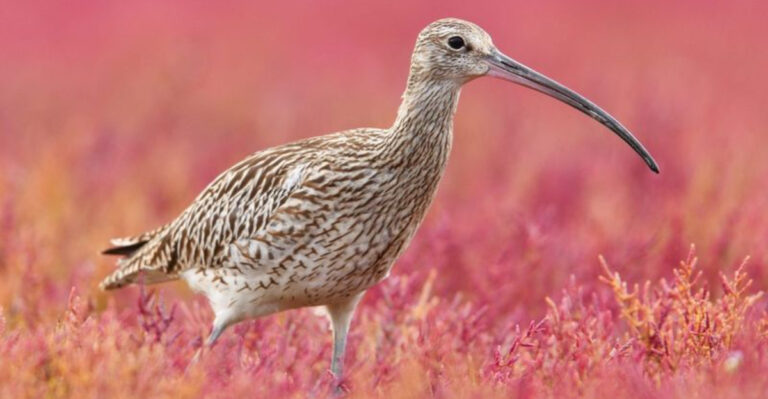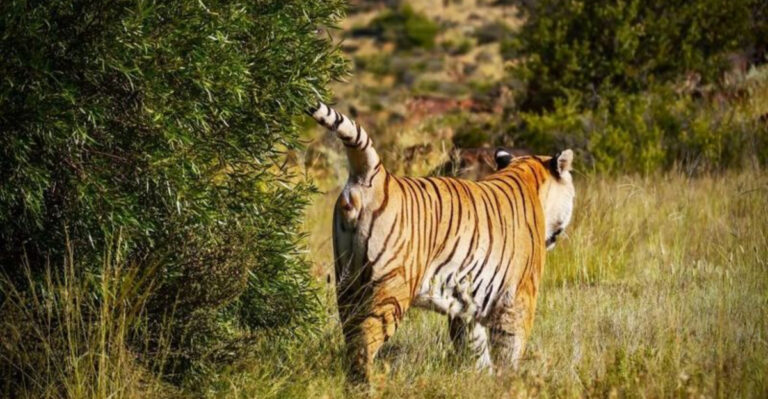In Honor Of The Upcoming World Tapir Day: 15 Tapir Traits That Make Them The Most Underrated Animal
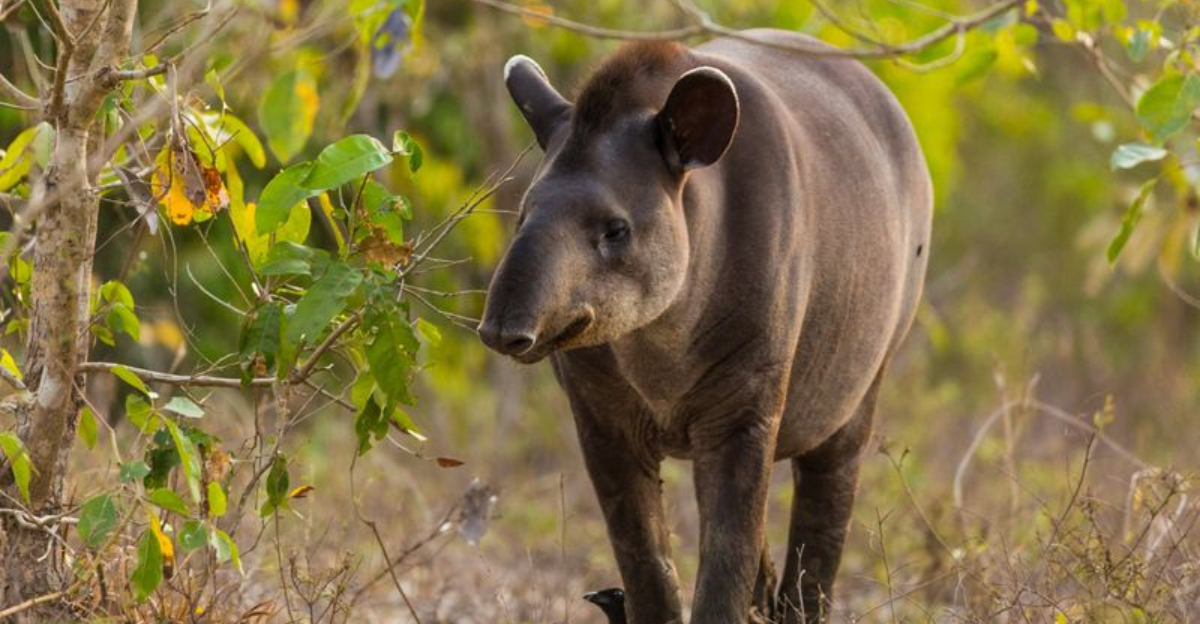
Ever heard of animals with flexible noses that resemble snorkels? You’re in for a treat! Today, we’re celebrating the adorable tapir, a creature that doesn’t quite get the limelight it deserves.
Their surprisingly graceful swimming skills, their ancient lineage, their looks – all of that makes tapirs creatures of charm and intrigue. Don’t be surprised if you end up becoming a tapir fan by the end of this read!
1. Snorkel-Nosed Wonder
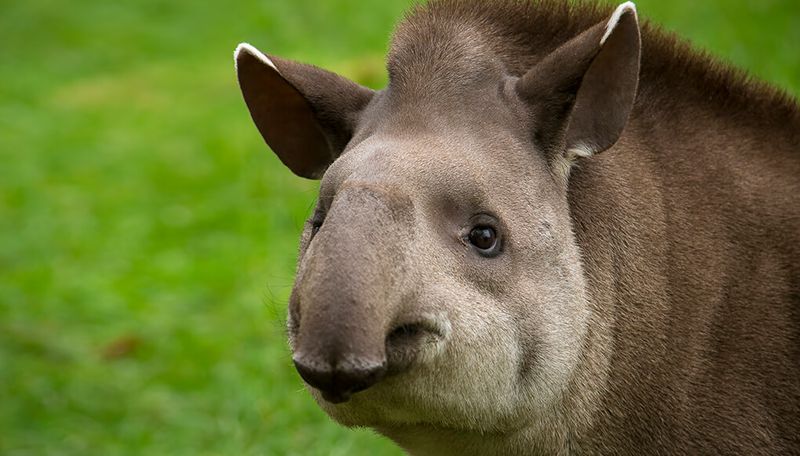
Imagine having a nose that could work like a snorkel! Tapirs have these incredible, flexible snouts that help them grab tasty leaves and twigs from trees.
It’s like having a built-in tool for dining in the wild. This specialized nose also assists them in detecting scents, making them excellent at finding food.
Their sniffers are so sensitive they can even sense predators from a distance. You might say their noses aren’t just for show; they’re essential for survival.
2. Ancient Creatures With A Twist
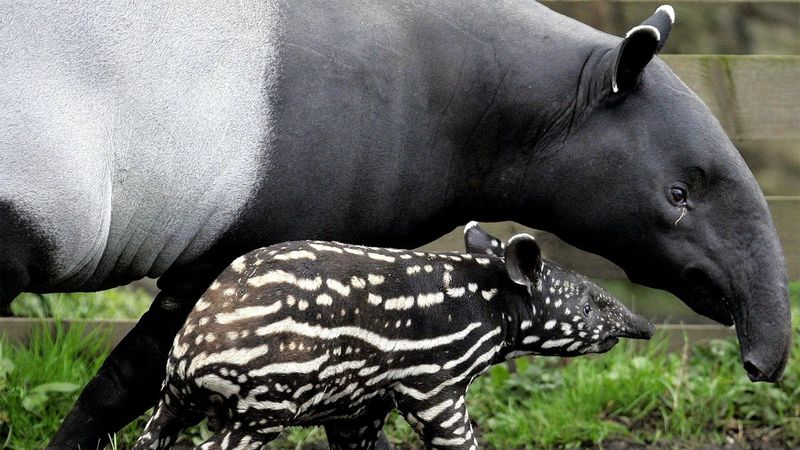
Tapirs have been around for millions of years, surviving alongside creatures like dinosaurs! Picture this: a creature that has witnessed countless changes on Earth yet remains unchanged.
This ancient lineage is a testament to their adaptability. With roots tracing back over 20 million years, tapirs are like living fossils.
Their evolutionary success story is one for the ages, showing us how they’ve managed to thrive through time.
3. Nature’s Swimmers
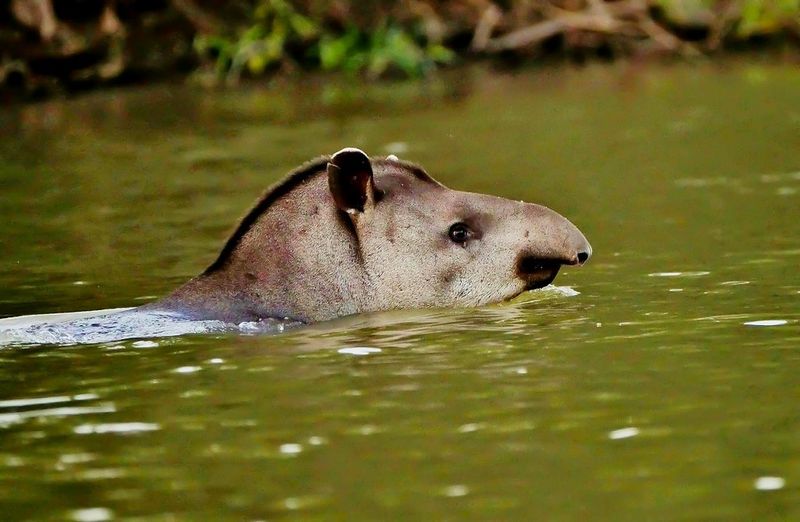
Surprise, surprise! Tapirs are excellent swimmers and can often be found cooling off in rivers. They’re not just ambling forest dwellers; they take to the water with the grace of a seasoned swimmer.
Those powerful limbs and flexible snouts assist them in navigating aquatic environments. This love for water might even rival your local otter!
Next time you think of swimmers, don’t forget the tapir’s hidden talent. They truly know how to make a splash in style!
4. Jungle Gardeners
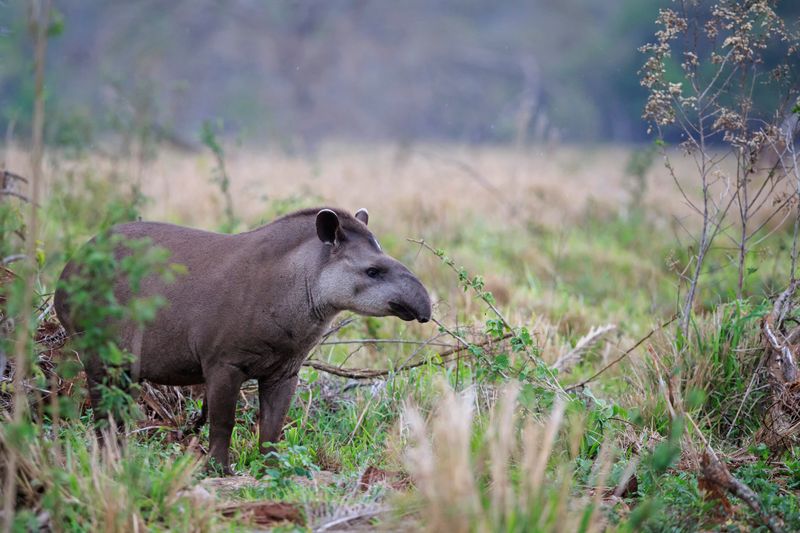
Believe it or not, tapirs play a crucial role in maintaining the ecosystems they inhabit. By munching on fruit and plants, they help disperse seeds across the forest floor.
Think of them as nature’s gardeners, leaving a trail of potential new life wherever they roam. Their dining habits ensure the growth and regeneration of plants, contributing to the health of their habitat.
5. Camouflage Experts
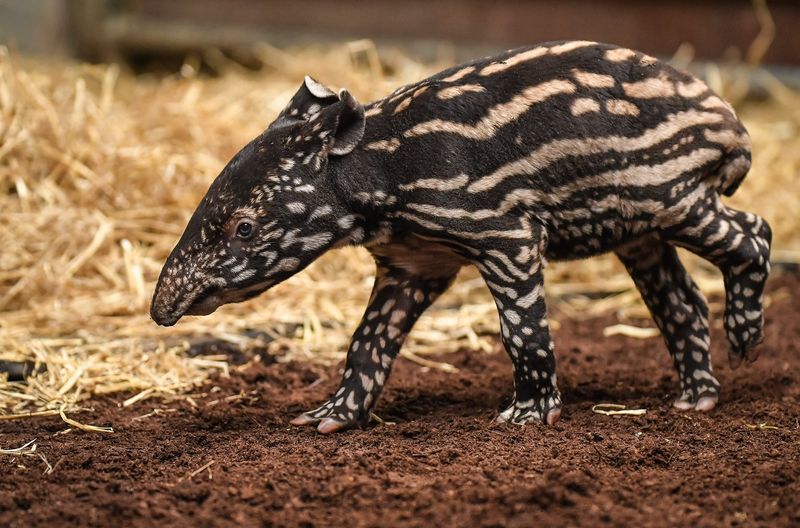
Tapirs might not sport flashy colors, but their muted tones are perfect for blending into their surroundings. Their coloration serves as camouflage, helping them stay hidden from predators.
This natural disguise is their secret weapon in the wild, allowing them to move about with little fear of being spotted.
6. Social Yet Solitary
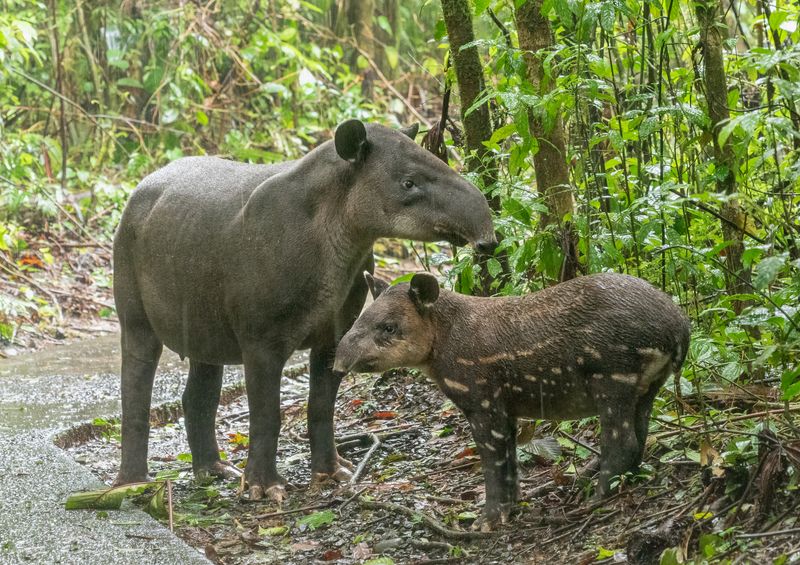
Tapirs have an intriguing social dynamic; they’re solitary creatures but enjoy the occasional meet-up. Think of them as introverted socialites who cherish their alone time but don’t mind a social gathering.
These brief interactions help them exchange information about food sources and potential threats. It’s like having a quick chat at the water cooler before returning to your cozy corner office.
7. Gentle Giants
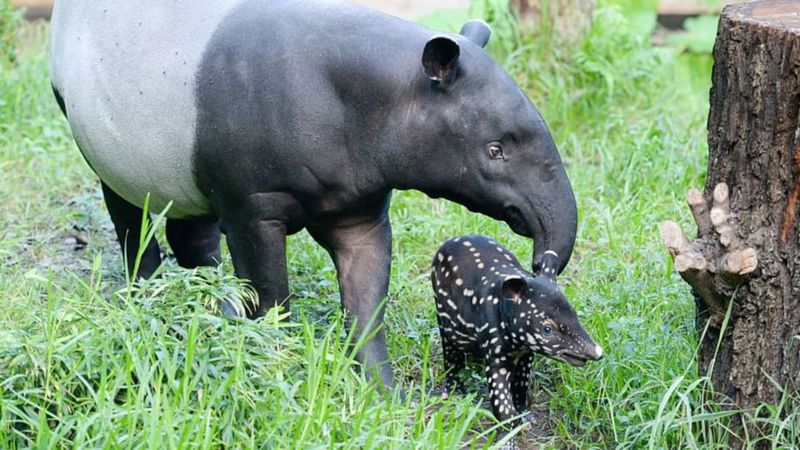
Despite their size, tapirs are known for their gentle disposition. Imagine a creature large enough to make an impact yet soft-hearted enough to nuzzle your hand.
They’re not aggressive by nature and prefer a calm existence, much like a giant teddy bear in the animal kingdom.
This demeanor makes them fascinating to observe and interact with in captivity or the wild. Their gentle nature is a reminder of the quiet strength that doesn’t need to roar.
8. Nocturnal Foragers

When the sun sets, tapirs come alive! These nighttime wanderers prefer the cover of darkness to forage for food. Picture a tapir under the moonlit canopy, its eyes scanning for leaves, twigs, and fruits.
Their nocturnal lifestyle keeps them safe from predators and the harsh rays of the sun. It’s almost as if they’re the secret night owls of the jungle, thriving in the cool, quiet hours.
9. Shy But Curious
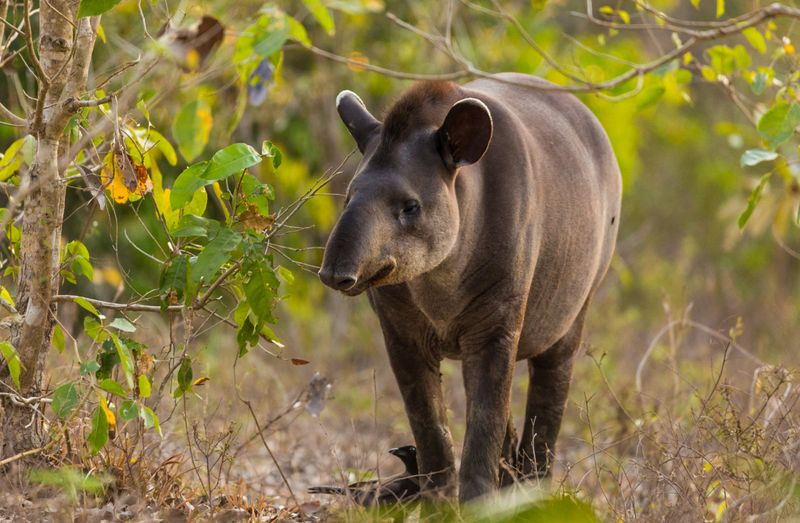
Tapirs are the wallflowers of the jungle, shy yet curious about the world around them. Imagine a creature cautiously peeking out from behind a tree, eager to explore but ever watchful.
This cautious curiosity helps them discover new food sources and navigate their environment safely. Their timid nature might make them less conspicuous, but it also makes them keen observers.
In a world full of bold movers, tapirs remind us of the power of quiet curiosity.
10. Strong Survivors
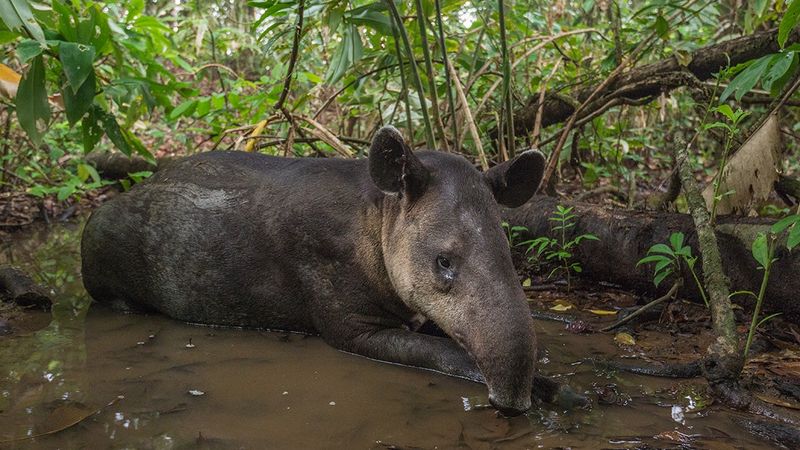
Don’t let their calm demeanor fool you; tapirs are strong survivors. Picture them navigating through rough terrains and dense forests, undeterred by the elements.
Their sturdy bodies and resilient nature enable them to thrive in different environments. Be it rain or shine, tapirs adapt with a quiet determination.
Their strength is not in aggression but in their ability to endure and adapt.
11. Unique Vocal Communicators
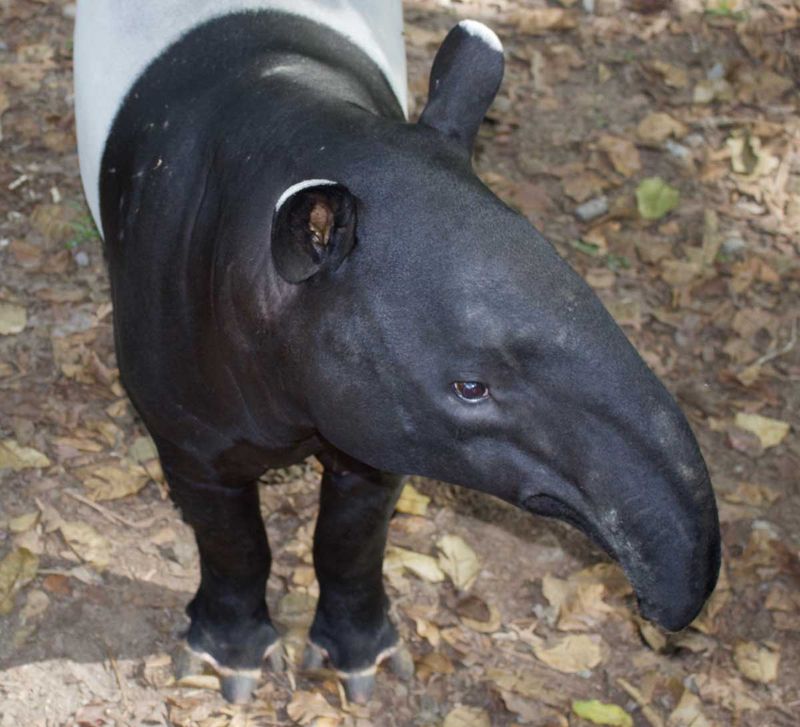
Tapirs have a unique way of communicating with each other through a series of high-pitched whistles and squeaks. Imagine the jungle alive with these distinct sounds, as tapirs signal to each other.
This vocal prowess helps them stay connected, especially in dense forests where visibility is low. They’re like the soprano singers of the animal kingdom, each call a vital part of their social interaction.
12. Adorable Calves
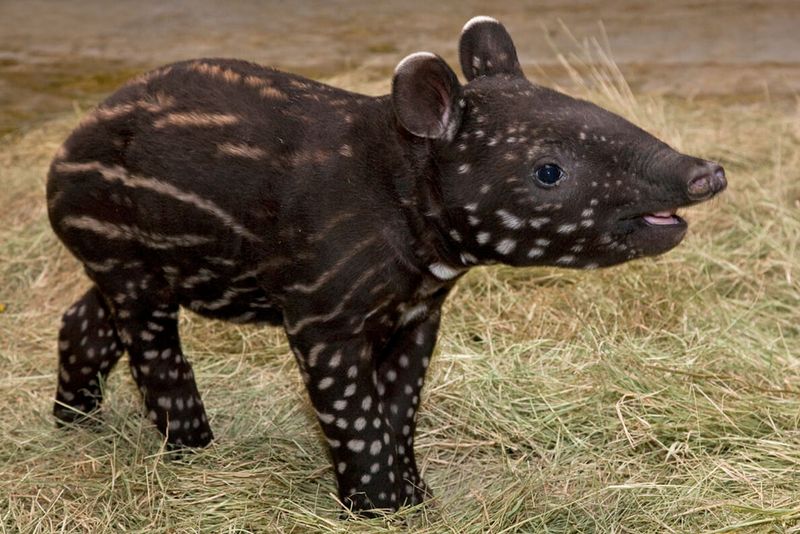
If you think tapirs are cute, wait till you see their babies! Tapir calves are born with charming stripes and spots, much like a watermelon.
These patterns help them blend into their surroundings, offering protection from predators. As they grow, these markings fade, but their baby charm remains.
Watching a young tapir explore its world is like seeing curiosity in its purest form.
13. Ecological Engineers
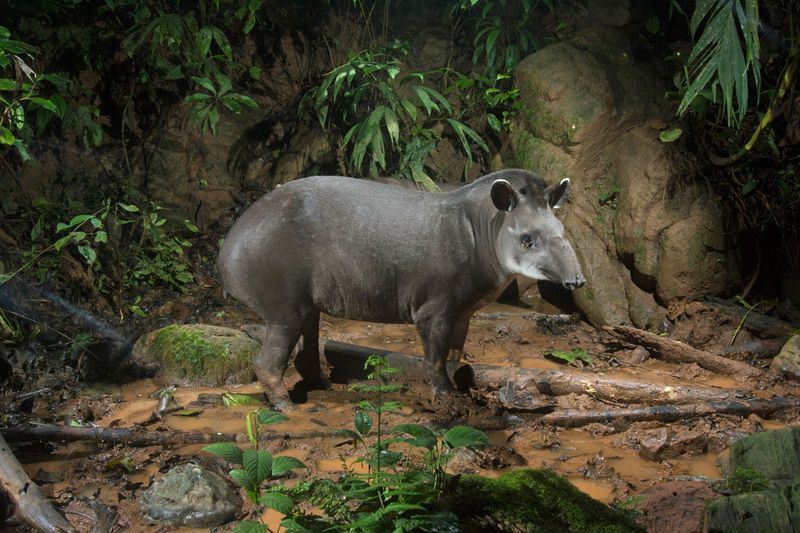
Tapirs aren’t just residents of their habitats; they’re also ecological engineers. By trampling vegetation and creating paths, they help shape the landscape.
Imagine the jungle floor, woven with tapir trails that guide other animals. These paths support biodiversity, allowing plants and smaller creatures to thrive.
Tapirs’ impact on their environment is profound, showing how even the quietest creatures can leave a lasting mark.
14. Adaptable Diets
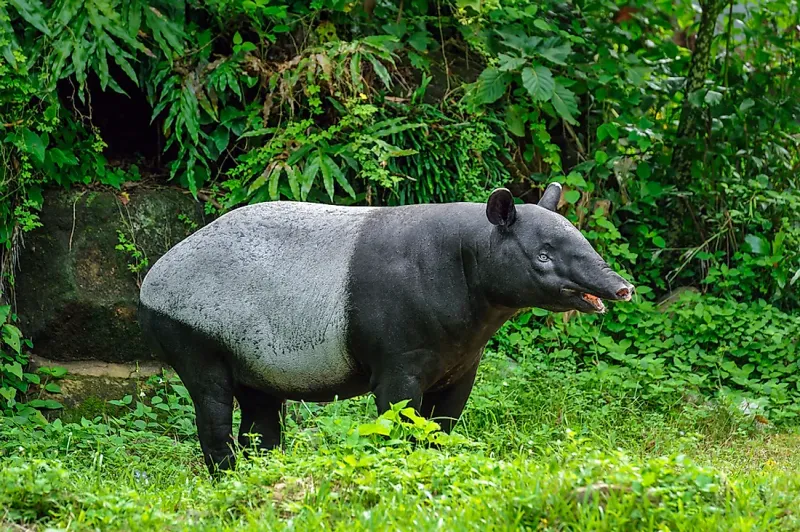
Tapirs are foodies with a taste for variety! Their diets include leaves, fruits, and even aquatic plants. Imagine them sampling the jungle’s buffet, savoring each morsel with delight.
This diverse palate allows them to adapt to changes in their environment, ensuring they always find something to munch on.
It’s almost like they’re the gourmets of the animal world, finding culinary delights in the wild. Their adaptability in diet is a testament to their resilience and ingenuity.
15. The Quiet Mystics
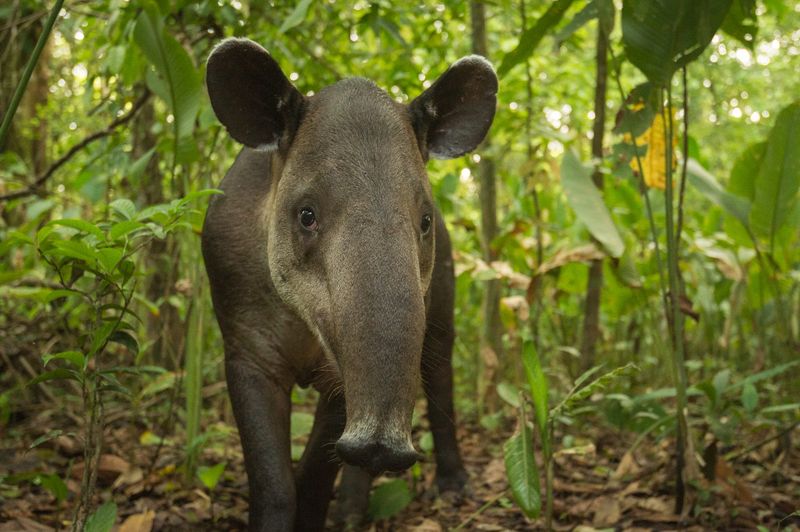
There’s something mystical about a tapir standing quietly in a misty rainforest. Their presence exudes a calm, almost otherworldly charm. Imagine the serenity of the jungle, with a tapir as its silent guardian.
Their quiet demeanor and gentle movements add a sense of peace to their surroundings.
They’re like the quiet mystics of the animal kingdom, offering tranquility in a world often bustling with noise. Being near a tapir is like finding a calming breath of fresh air.




